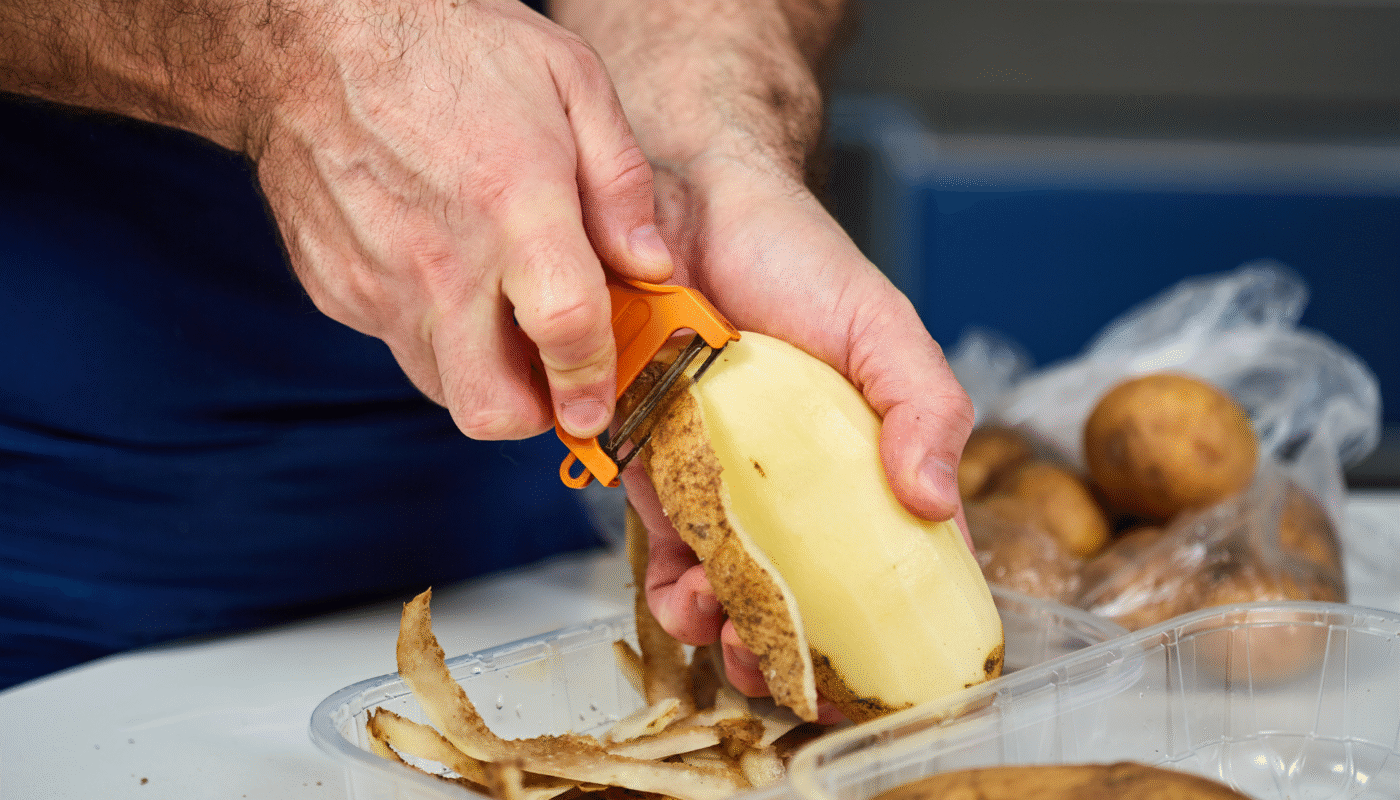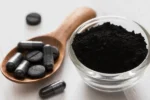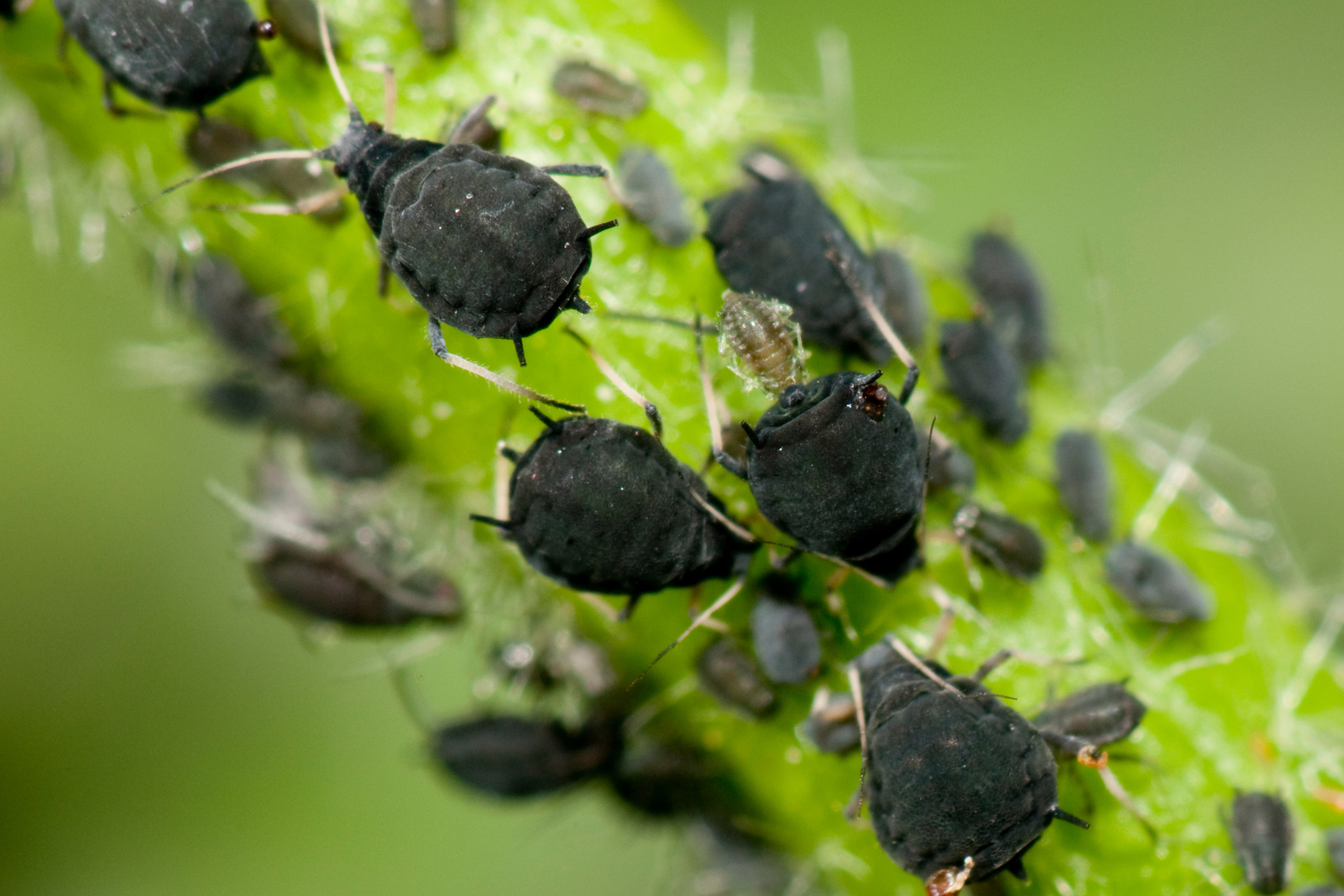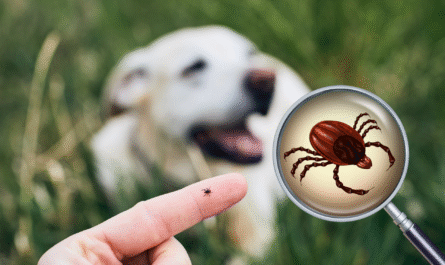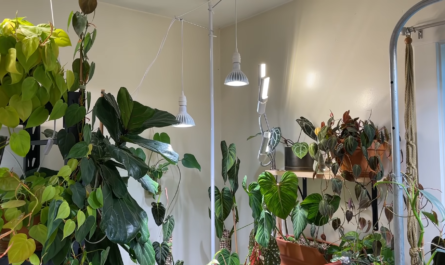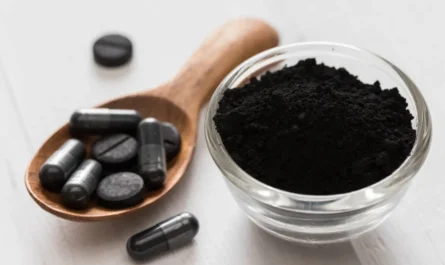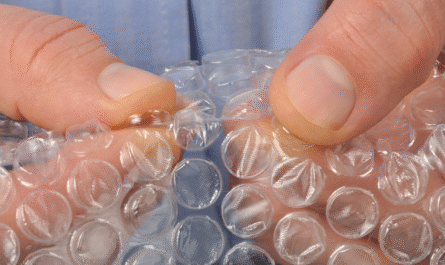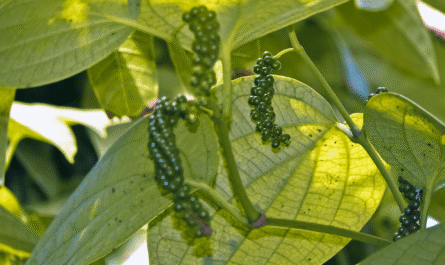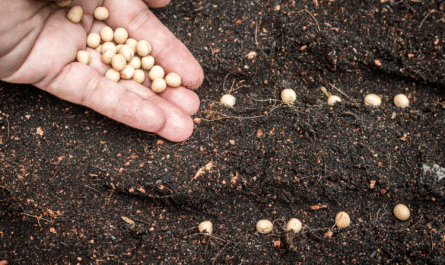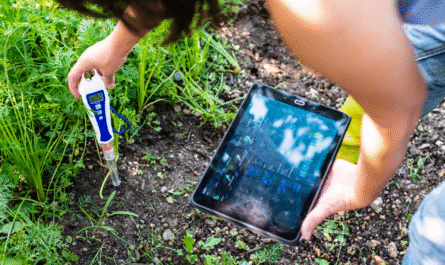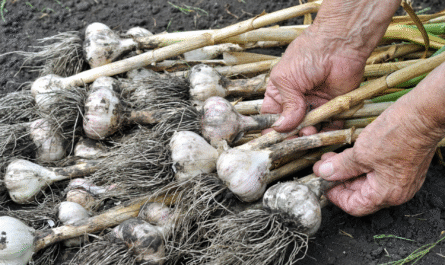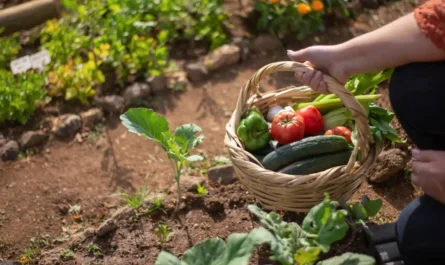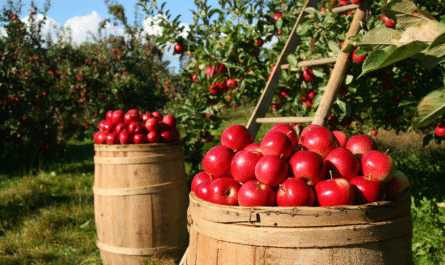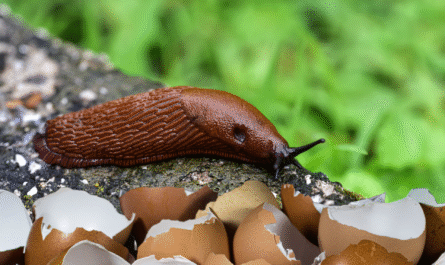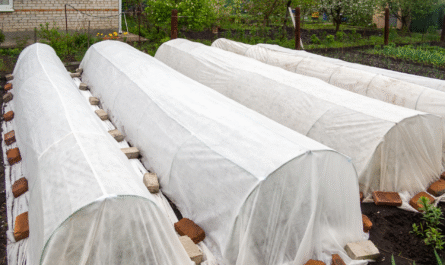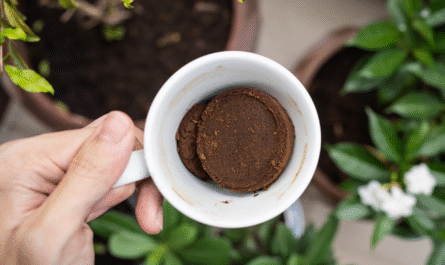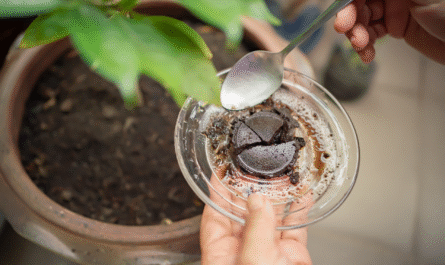As a longtime gardener, I’ve learned to look at food scraps not as waste but as an opportunity. Potato peels are one of the most underrated tools in my gardening toolkit.
Packed with nutrients like potassium, magnesium, and calcium, they offer multiple benefits if you know how to use them right. Whether I’m enriching my compost pile, feeding my tomato plants, or managing pests organically, potato peels are always part of my strategy. Here’s how I turn these simple kitchen scraps into garden gold.
Why Use Potato Peels?
Potato peels are rich in nitrogen and trace minerals, which makes them excellent green matter for your compost. I regularly toss peels into my compost bin, but always balance them with plenty of carbon-rich browns like dried leaves, shredded cardboard, or sawdust. That balance is crucial, too much green matter can make the pile slimy or smelly.
One thing I never do is add peels from potatoes that are moldy, green, or showing signs of disease. These can introduce pathogens into my compost, which may later infect my plants. The same goes for peels with eyes that have started to sprout. If left unchecked, they can actually start growing in the compost pile and throw off its balance. That’s why I always chop up peels before composting to speed up decomposition and avoid sprouting.
To avoid attracting pests, I make sure to bury the peels deep inside the pile. Surface-level potato scraps are like a dinner bell for rats and raccoons. Covered properly, though, they’ll break down quickly and quietly, enriching the compost with vital minerals that my plants will thank me for later.
Trench Composting
When I want to give specific garden beds a boost, I use trench composting. This method lets me feed the soil directly where it matters most—at the root zone. I dig narrow trenches between rows or in the off-season beds, toss in chopped potato peels, and cover them with at least 6 inches of soil.
This deep burial prevents rodents or other pests from digging them up while they break down underground. As the peels decompose, they release nutrients like potassium and phosphorus directly into the root zone, improving plant health and encouraging strong root development. It’s a low-effort, high-impact way to enrich the soil.
But there’s a caveat: never use green or sprouting peels for this method. Green peels contain solanine, a toxic compound that can harm both plants and soil microbes. I always inspect the peels and discard any that look suspect. Better to be safe than sorry when you’re working directly in your planting zones.
Also Read: Why You Should Start Sprinkling Eggshells Around Your Tomato Garden
Liquid Fertilizer
Another method I rely on is potato peel tea, an easy liquid fertilizer that’s especially handy for container gardens. I simply place a handful of fresh peels in a mason jar or bucket, fill it with water, and let it steep for four to five days. Then I strain out the solids and dilute the liquid 1:1 with water.
This “tea” is loaded with water-soluble nutrients like potassium, which supports flowering and fruiting, and calcium, which strengthens plant cell walls. I use it on my tomatoes, peppers, and even my indoor plants. It gives them a natural, gentle boost, especially during periods of rapid growth or flowering.
That said, moderation is key. I never use this fertilizer more than twice a month. Overuse can lead to nutrient imbalances or salt buildup in the soil. And as always, I avoid peels that have been fried or seasoned, they’ll do more harm than good. Stick with raw, clean peelings and your garden will reap the rewards.
Powdered Fertilizer
When I have a surplus of potato peels, I turn them into powdered fertilizer. It’s simple and shelf-stable, perfect for winter storage or off-season prep. I dry the peels in the oven at a low heat (around 300°F for 15-20 minutes), then cool and grind them into a fine powder using an old coffee grinder.
This powder is packed with slow-release nutrients like magnesium, phosphorus, and potassium. I store it in an airtight container and use it as needed, either sprinkled around the base of plants or dissolved in water for a liquid feed. It’s especially useful in early spring when I want to prepare the beds without relying on fresh compost.
What I love most about the powdered form is its versatility. It doesn’t spoil, takes up very little space, and can be blended with other dried amendments like banana peel powder or eggshell calcium for a more complete fertilizer. It’s one of my favorite ways to extend the life and utility of my kitchen scraps.
Pest Control
Believe it or not, potato peels are excellent for pest control, especially for slugs and fungus gnats. These pests are attracted to the sugars and fermenting scent of decomposing potato skin. I lay down a few pieces near problem areas in the evening and collect the peels (and the slugs) in the morning.
This simple trap method helps reduce pest populations without chemicals. For gnats, I sometimes place peels on top of potted soil, adult gnats are drawn to them as egg-laying sites. I remove and replace the peels every two days to keep them from becoming breeding grounds.
I wouldn’t recommend using peels as a repellent or mulch, they’re too attractive to pests in that form. But as bait in a closed-loop system, they work like a charm. It’s a way to manage pests while staying organic and sustainable.
Boosting Soil Microbial Life
One of the less talked-about benefits of using potato peels in the garden is their ability to support healthy soil biology. As they decompose, they feed beneficial microbes and fungi that break down organic matter and improve nutrient cycling. Healthy soil life is the cornerstone of any thriving garden.
I often use potato peels in areas of the garden where the soil is depleted or compacted. Adding peels, either via trench compost or as part of a larger compost mix, introduces organic matter that microbes feast on. In turn, these microbes unlock nutrients and improve soil structure, leading to better water retention and aeration.
Over time, this process builds a rich, dark, crumbly soil that smells earthy and feels alive. That’s the kind of soil that grows strong, disease-resistant plants. So while I’m feeding the plants above the surface, I’m also cultivating the life below it, with nothing more than kitchen scraps.
Seedling Support and Transplant Boost
When I transplant seedlings, I often bury a small handful of chopped potato peels at the bottom of the planting hole. As the peels break down, they release nutrients that feed young roots during those crucial early weeks of growth. It’s a slow-release feeding system that helps prevent transplant shock.
I’ve especially seen great results with heavy feeders like tomatoes, squash, and brassicas. These crops seem to establish faster and produce more vigorous early growth when planted over a layer of buried peelings. Just be sure to keep the peels at least 3 inches below the surface to avoid attracting pests.
This little trick is one of my transplant secrets. It’s simple, costs nothing, and gives my crops a head start in the season. And because the nutrients are released gradually, there’s no risk of fertilizer burn.
Potato Peels and Soil pH
Many gardeners ask me if potato peels affect soil pH. The answer: yes, slightly, but usually in a good way. Potato peels are mildly acidic, which can help balance overly alkaline soils. That’s great news if you’re growing acid-loving crops like blueberries, potatoes, or azaleas.
However, I always recommend testing your soil first before making any amendments. If your pH is already low, adding too many peels could cause issues with nutrient availability. In neutral soils, though, small amounts of peels won’t make a dramatic change and can be quite beneficial.
In my own garden, I use peels as part of a larger soil-building system. Combined with other organic inputs, they help create a balanced, living soil that supports diverse crops. Whether your soil leans acidic or alkaline, moderation and variety are the keys.
Final Thought
Using potato peels in the garden is more than just a way to reduce waste, it’s a smart, sustainable method to nourish the soil, control pests, and support healthy plants. What started as a simple effort to recycle kitchen scraps has turned into a core part of my gardening routine. With the right techniques, those humble peels become powerful allies in every growing season.
FAQs
Once or twice a month is enough. Overuse can lead to nutrient imbalance or soil compaction due to salt or starch accumulation. Yes, peels from diseased or moldy potatoes can carry pathogens like blight. Always inspect peels and compost only healthy scraps. They can if left on the surface. Bury peels deeply in compost or soil (at least 6 inches) to avoid attracting rodents or raccoons. They’re great for most plants, especially those that benefit from potassium and phosphorus. Avoid overuse in already acidic soils or on salt-sensitive crops. How often should I use potato peel fertilizer?
Can potato peels spread disease in the garden?
Do potato peels attract rodents?
Are potato peels good for all plants?

